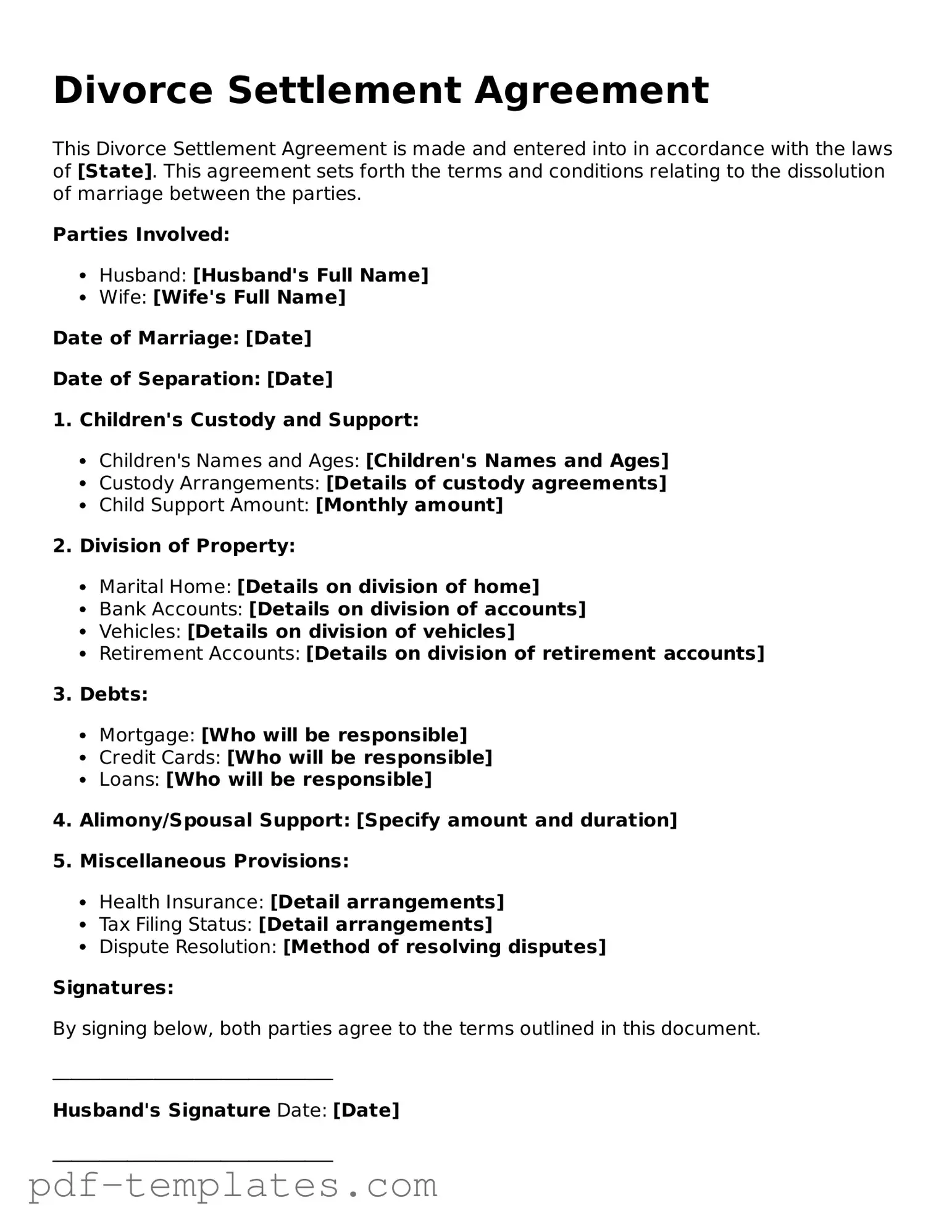The Divorce Settlement Agreement (DSA) is similar to a Separation Agreement, which outlines the terms under which a couple will live apart. This document addresses issues such as property division, child custody, and support obligations. Like the DSA, a Separation Agreement is legally binding and must be signed by both parties, ensuring that both individuals agree to the terms before proceeding with divorce or separation.
It is crucial to have a reliable mechanism in place for unexpected situations regarding your child. A well-prepared Power of Attorney for a Child can help. This legal document can facilitate appropriate decision-making in emergencies or while traveling. For more information, consider exploring the essential Power of Attorney for a Child form.
A Parenting Plan shares similarities with the DSA, focusing specifically on child-related issues. This document details the custody arrangement, visitation schedules, and decision-making responsibilities for the children. While the DSA covers broader aspects of the divorce, the Parenting Plan is a crucial component, ensuring that the children's best interests are prioritized and clearly defined.
The Marital Settlement Agreement is another document akin to the DSA. It serves to finalize the division of marital assets and debts. Like the DSA, it is comprehensive and legally enforceable, covering financial matters such as alimony, retirement accounts, and real estate. Both documents aim to provide clarity and resolution to the couple’s financial obligations post-divorce.
A Child Support Agreement is specifically focused on the financial responsibilities of parents towards their children. This document outlines the amount of support, payment schedule, and any additional expenses such as healthcare or education costs. Similar to the DSA, it is designed to protect the welfare of the children and ensure that both parents contribute fairly to their upbringing.
The Alimony Agreement, while often part of the DSA, can also stand alone. It specifies the terms of spousal support, including the amount and duration of payments. This agreement is essential for ensuring that one spouse is financially supported after the divorce, reflecting the same principles of fairness and mutual consent found in the DSA.
A Cohabitation Agreement is relevant for couples living together but not married. This document outlines the rights and responsibilities of each partner regarding property and finances. While it is not a divorce document, it shares similarities with the DSA in that it seeks to clarify the terms of a relationship and protect the interests of both parties, particularly in the event of separation.
The Quitclaim Deed is a legal document used to transfer property ownership from one party to another. In the context of a divorce, it can be used to relinquish claims on jointly owned property. While not a settlement agreement, it complements the DSA by facilitating the division of real estate assets as outlined in the divorce settlement.
A Financial Disclosure Statement is often used in divorce proceedings to provide a clear picture of each party's financial situation. This document lists assets, debts, income, and expenses. Similar to the DSA, it promotes transparency and fairness, ensuring that both parties are fully informed before finalizing the settlement.
Lastly, a Release of Claims document may be executed alongside the DSA. This document releases one party from any future claims related to the marriage or divorce. It serves to protect both parties from potential legal disputes after the settlement is finalized, reinforcing the intention behind the DSA to bring closure and resolution to the relationship.
